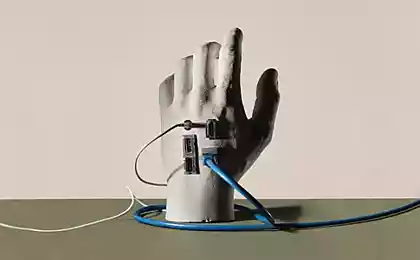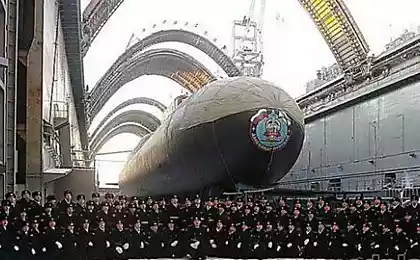3327
Exoskeletons in medicine
The first comment to my previous post about robotics in medicine was a request (or question) used to write about exoskeletons.
What is an exoskeleton? This "external skeleton", which due to the frame increases the power of man. He should repeat the biomechanics that will allow him to proportionally increase the power during movement. Among the applications exoskeletons - military affairs, agriculture and medicine.
Such developments in the medical field - ask for habrakat.

The first exoskeleton h4> First - a bit of history. As with many inventions, the exoskeleton has come to us from the military sphere. The first sample was developed by General Electric and the US Army in the 1960s. Awesome looks, is not it? Efforts that you use when lifting the four and a half pounds, he transformed a 110 kg.
Exoskeleton for nurses h4> This is not the Japanese to come up with exoskeletons to care for the elderly? Only in this case is to take care of the young and - of nurses who have to lift and move patients. Purpose of this exoskeleton, like a robot Ribo, in shifting.
ReWalk h4> The administration of the Food and Drug Administration in the summer of this year registered the first exoskeleton for rehabilitation of patients with spinal cord injuries.
EkzoAtlet h4> EkzoAtlet - is the development of Russia. It is intended "for standing and walking in patients with impaired locomotor function of the lower extremities."
Soft exoskeletons h4> Flexible exoskeleton repeating the biomechanics of the human foot, may be a promising direction in this area. After all, the glands around the legs are clearly inferior healthy parts of the body in terms of maneuverability.
3D-print h4> 3D printers in medicine can be very helpful. As they helped Amanda Boxtel, paralyzed from the waist down. Specialists of 3D Systems scanned her body, and with EksoBionics Print this exoskeleton.
Robokostyum and football h4> Giuliano Pinto at the opening of the World Cup 2014 football kicked the ball. Like anything interesting - kicked and kicked. But he was completely paralyzed, the 29-year-old parne. He controlled the exoskeleton using your own brain, rather than using the remote control or own feet, which remained at least some possibility of movement.
What is an exoskeleton? This "external skeleton", which due to the frame increases the power of man. He should repeat the biomechanics that will allow him to proportionally increase the power during movement. Among the applications exoskeletons - military affairs, agriculture and medicine.
Such developments in the medical field - ask for habrakat.

The first exoskeleton h4> First - a bit of history. As with many inventions, the exoskeleton has come to us from the military sphere. The first sample was developed by General Electric and the US Army in the 1960s. Awesome looks, is not it? Efforts that you use when lifting the four and a half pounds, he transformed a 110 kg.
But he had two disadvantages: it is the weight of 680 kg and the inability to synchronize movement with the movement of the person. That is, it feedback after the start of the movement of people do not get.
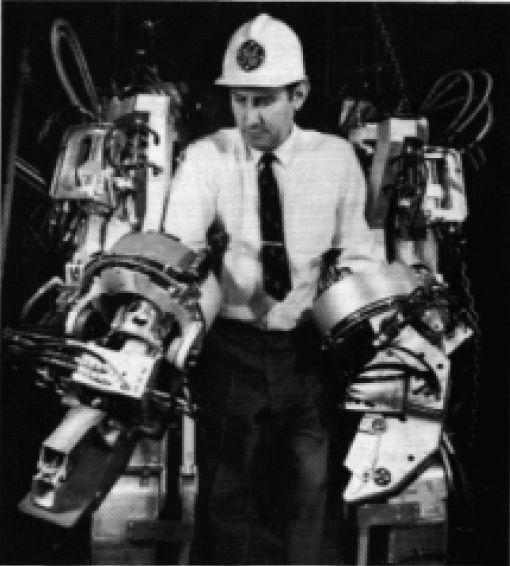

Then repeatedly developed exoskeletons for the army. After all, they can greatly increase the carrying capacity of a soldier, so he could take a gun and plenty of equipment on the shelf.
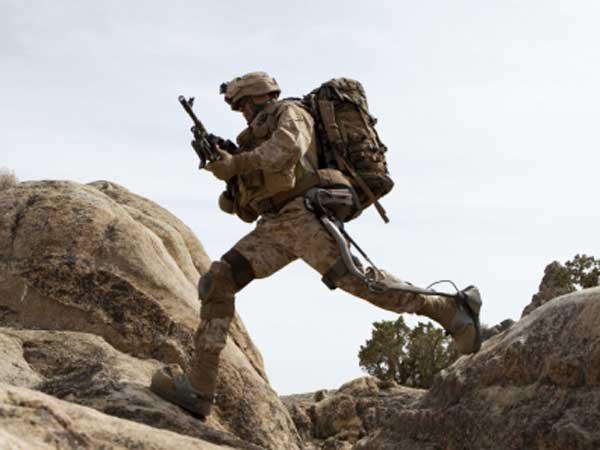

And who still need to increase the power? Those who have too little. Those who are paralyzed and can not walk on their own. It is they who can help such projects.
Exoskeleton for nurses h4> This is not the Japanese to come up with exoskeletons to care for the elderly? Only in this case is to take care of the young and - of nurses who have to lift and move patients. Purpose of this exoskeleton, like a robot Ribo, in shifting.
Power Assist Suit in Japan introduced in the 1990s.
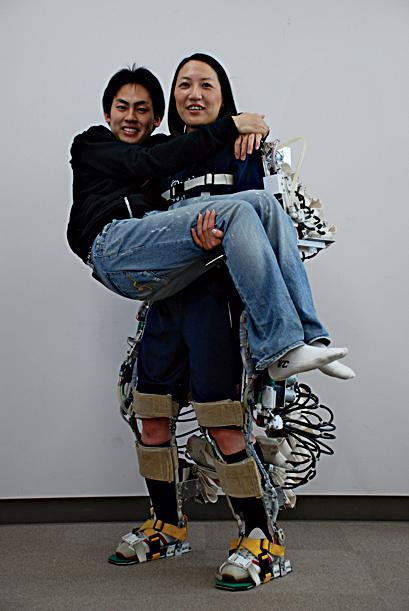


Later in Japan presented HAL - kiberkostyum-ekzoskleet. It was originally designed specifically for lifting and moving patsienov. In addition, it could help the elderly and the disabled to move independently.


ReWalk h4> The administration of the Food and Drug Administration in the summer of this year registered the first exoskeleton for rehabilitation of patients with spinal cord injuries.
ReWalk by Israeli developer has a remote control in the form of a wristwatch. That's just better to use crutches - for added stability. Anything is better than sitting in a chair, I think.

A couple of years ago, this suit has helped a paralyzed woman to overcome the marathon.
EkzoAtlet h4> EkzoAtlet - is the development of Russia. It is intended "for standing and walking in patients with impaired locomotor function of the lower extremities."
To industrial scale is still far, but the prototype, according to information on the network already in place. If you have something to add on this subject - please write in comments or in private messages.


Soft exoskeletons h4> Flexible exoskeleton repeating the biomechanics of the human foot, may be a promising direction in this area. After all, the glands around the legs are clearly inferior healthy parts of the body in terms of maneuverability.
Several universities and developer of wearable sensors BioScience develop here this "pad" with artificial muscles, sensors, Software and Components. There are visible and artificial tendons, and artificial muscles, stretched on the outside of the leg.
Much difficulty lies precisely in flexibility: it therefore means of control, that is, the sensors should be different special accuracy.
Such equipment will not only help people with mobility impairments foot and ankle (as long as the device works only there), but in the future may be used in other areas - on the hands, for example.

This video clearly visible artificial muscles, and also shows the sensors used in this soft exoskeleton.
3D-print h4> 3D printers in medicine can be very helpful. As they helped Amanda Boxtel, paralyzed from the waist down. Specialists of 3D Systems scanned her body, and with EksoBionics Print this exoskeleton.


I think it's awesome cool - after years of inability to walk to get back on their feet.
Robokostyum and football h4> Giuliano Pinto at the opening of the World Cup 2014 football kicked the ball. Like anything interesting - kicked and kicked. But he was completely paralyzed, the 29-year-old parne. He controlled the exoskeleton using your own brain, rather than using the remote control or own feet, which remained at least some possibility of movement.
The creator of this exoskeleton Miguel Nikolesis from Brazil. The Government has allocated it to the development of these 14 million dollars, which is not such a high amount, when compared with the amount spent on such projects in the United States.

Will neurocontrol future prosthetics and exoskeletons? It seems obvious that the work in this direction should be carried out with great force. But it is necessary to attract investment.
Source: habrahabr.ru/post/239639/
Scientists have found a way to control the liquid metal, changing its surface tension
In the microwave, its powerful and dangerous microwave weapon





















